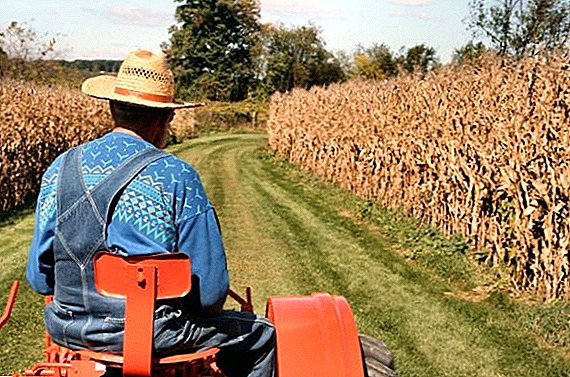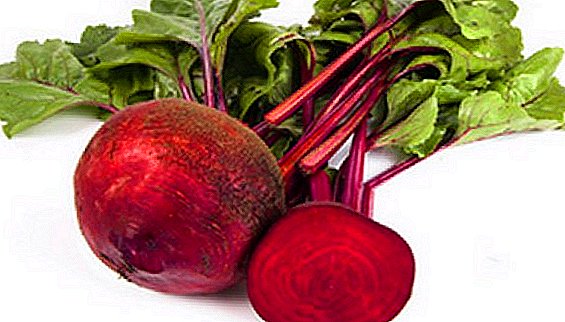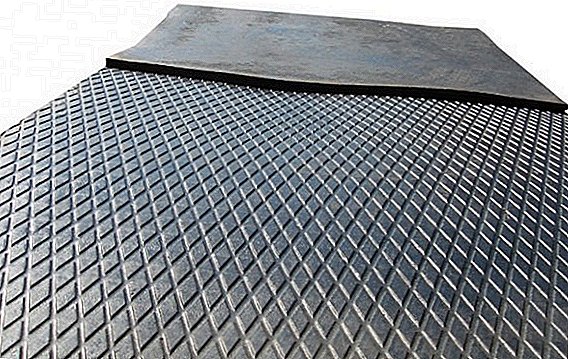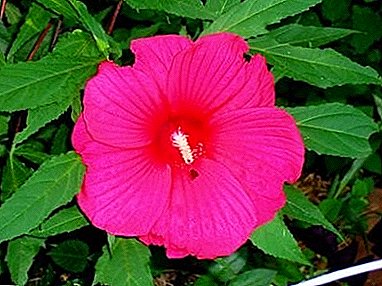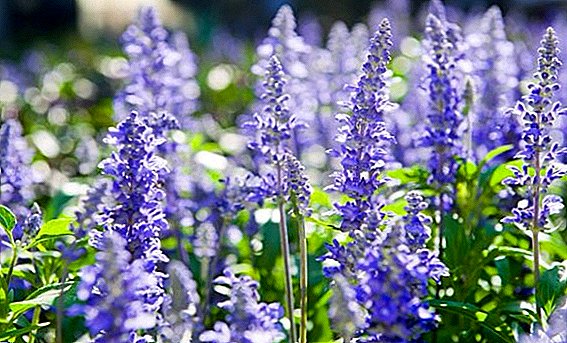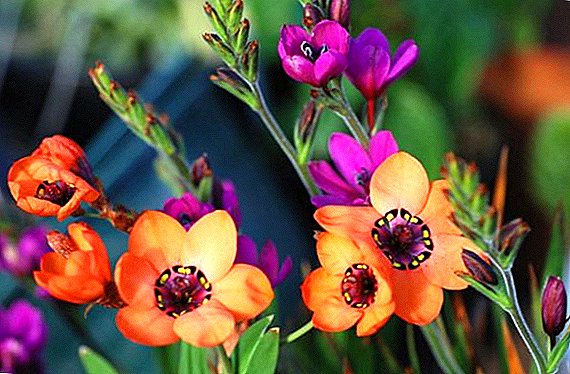
Cabbage is one of the most common plants in our gardens. Heads of cabbage can be bought in the store, but it will be more useful to grow a vegetable on your own land, then you can be confident in its ecological qualities. But in such a situation, there is an acute question regarding the selection of cabbage varieties. To date, one of the most popular varieties of cabbage is "Megaton".
In our article you can see the photos of Megaton cabbage, learn all the characteristics of the variety. What are the best goals to grow it, and how to properly care for and prevent pests and diseases of cabbage.
Description and photo
The variety of cabbage has rather wide leaves that grow horizontally and upwards. They have a light green color and noticeably concave, there is a wax coating. The upper leaves with wrinkles, bluish tint. The average weight of cabbage heads is 4 kg.





History of
The plant was bred by Dutch breeders in 1996. Today this variety of cabbage is included in the state register of Russia.
What is the difference from other species?
The variety of cabbage "Megaton" can be distinguished from other varieties, according to the following characteristics:
- High yield. With one square meter can be collected up to 9 pounds of cabbage.
- The small size of the stalk.
- High productivity.
For what purposes is suitable cultivation?
Cabbage "Megaton" can be used for pickling, pickling, as an additional ingredient in the soup. Due to its excellent taste, the plant is consumed fresh.
Characteristics of the variety: advantages and disadvantages
Among the advantages of the described cabbage variety are the following:
- Large sizes of heads.
- The plant is resistant to diseases such as gray rot, kila, black leg, wilt.
- Cabbage is rarely attacked by pests.
- It tolerates temperature extremes.
- Cabbage is of medium late ripening, from 136 to 168 days, from sowing seeds until the first crop appears.
- The plant can be stored for three months.
- Cabbage tolerates transportation.
The disadvantages of this variety of cabbage include some hardness of the fruit, which disappears a week after harvest.
Step-by-step instructions for care and landing
 To obtain a high-quality crop, you need to follow certain rules related to planting and caring for Megaton cabbage:
To obtain a high-quality crop, you need to follow certain rules related to planting and caring for Megaton cabbage:
- Landing time.
A suitable time for planting seedlings in the soil is the period from mid-April to early May. You can focus on the condition of the seedlings, on the sprouts should form 3-4 leaf.
- Choosing a landing site.
It is necessary to give preference to the site, which is in a small shade. Cabbage can not be planted in the beds, where they used to grow cruciferous varieties of vegetables. It is better to choose a place where onions, carrots, beans or peas were previously grown.
- The soil.
It is necessary to opt for fertile soil, the ideal option is black soil, but light loam is also suitable.
- Landing.
- Initially, it is necessary to make holes or trenches in the ground, at the bottom of which the earth is covered with a handful of ash.
- It is recommended to make the beds narrow, but so that you can plant 2 rows of cabbage.
- The wells are treated with boiling water with a weak solution of manganese in order to further protect the plant from the effects of the black leg.
- Sapling is dug out from a pot.
- Spreading the roots, the plant gently dipped in the hole, sprinkled on all sides of the soil.
- The first leaf should remain outside. After planting, seedlings are watered.
- Temperature.
The optimal temperature for growing varieties of cabbage "Megaton" is 15-18 degrees. The minimum allowable temperature is 13 degrees. The maximum temperature is 25 degrees.
- Watering.
Cabbage needs plenty of watering. One square meter weekly need to pour a bucket of water. But it is also impossible to pour cabbage too much, this will lead to the decay of the roots. In the dry season, you can water the plant with a turntable.
- Top dressing cabbage.
For the first feeding apply potash fertilizer with the addition of saltpeter, fertilizing is carried out immediately after planting seedlings into the ground. For the second time, fertilizer with nitrogen is used during the formation of the head. The third time, fertilizers are used with a nitrogen and phosphorus content, applied after 3 weeks.
Before using fertilizers, be sure to read the instructions on the package.
- Other measures to care for vegetables.
To obtain a high-quality crop, it is necessary to loosen the soil and spud the plants.
- Harvesting.
Cut cabbages should be before the first frost. The cabbages are cut in dry weather, the upper leaves are torn off, the cabbage is dried.
Crop storage
For storage, cabbages are placed in a cool room, protected from moisture and frost. Storage can be carried out in wooden boxes.
Diseases and pests
 Cabbage Megaton F1 is resistant to many diseases and insects. But there are such diseases and pests that are still able to hit the plant:
Cabbage Megaton F1 is resistant to many diseases and insects. But there are such diseases and pests that are still able to hit the plant:
- Blackleg. The stem of the plant turns black and rot.
- Mealy dew. Leaves form a grayish-white bloom or dark brown balls. Over time, the raid becomes denser and then turns brown.
To prevent the occurrence of the disease, before sowing, seeds should be soaked in hot water for 20 minutes. Also planting sprayed with infusion of garlic. To prepare the infusion:
- 75 grams of minced garlic is poured with a bucket of water for 12 hours.
- The liquid is brought to a boil and cooled.
- Aphids and caterpillars. They feed on the pulp and juice of the leaves. To fight insects:
- 2 pounds of tomato tops for 3-4 hours soaked in half a bucket of water.
- Next, the infusion is boiled for 3 hours.
- Cool, filter, add water in a ratio of 1: 2.
- Add about 30 grams of tar soap.
- Infusion sprayed cabbage.
- Cruciferous bug. There are holes in the leaves. It will help the constant loosening of the soil.
- Butterfly moths frighten off the smell of dill, cumin, marigolds or coriander.
Root rotting can also occur; for this, watering should be carefully controlled. And regarding burns on the leaves from exposure to the sun, it is recommended to cover the plant with natural material, not blocking access to air.
Many vegetable growers who have grown cabbage of this variety are satisfied with the result of their labor and recommend this cabbage to their friends and acquaintances.




